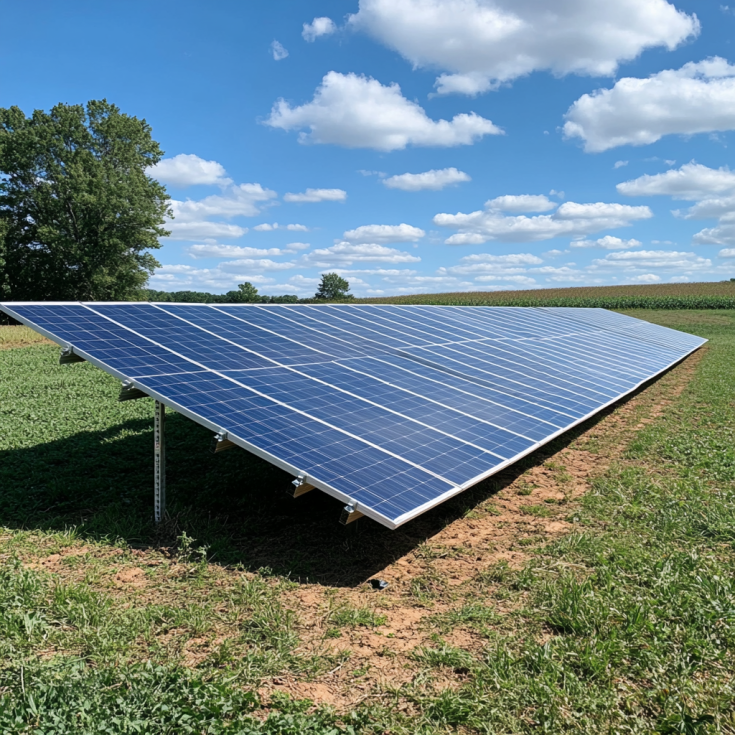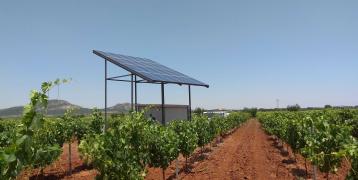Renewable energy for sustainable agriculture

Agriculture is both a significant contributor to and a victim of, climate change. It accounts for around 11% of domestic EU greenhouse gas emissions, while the agrifood sector as a whole is closer to 31%. At the same time, changing climate patterns are affecting crop yields, water availability, and farming conditions, which are affecting the competitiveness of the industry.
Integrating renewable energy can offer a two-fold solution by reducing the sector’s dependence on fossil fuels and its carbon emissions, while also diversifying farmer income by making land available for renewable energy systems, or selling excess energy from their own technologies.
Investing in renewable energies for agriculture
The AgroRES project (2019-2023) explored the challenges related to the uptake of renewable energy in farms, looking to overcome barriers related to complex permitting and subsidies, limited access to credit, and doubts about the profitability of technologies.
High investment costs for renewable energy technologies can be prohibitive for small and medium-sized farms, which often struggle with limited access to capital. Moreover, technical expertise is needed to maintain and operate renewable energy systems, which may be lacking in farming communities.
The project identified a number of good practices for the uptake of renewables, such as:
- Joint procurement to bring down prices
- Energy communities and co-operatives for farmers to collaborate in energy production
- Subsidies and grants to reduce upfront costs
- Learning environments to educate farmers and develop the necessary skills to implement these systems
The project resulted in action plans for its partner regions of Bucharest-Ilfov (Romania), Extremadura (Spain), North Karelia (Finland), Lazio (Italy), Lubelskie Voivodeship (Poland), Devon (United Kingdom), and the Northern & Western Region of Ireland. Actions revolve primarily around creating new funding schemes and advisory services and supporting the establishment of energy communities and new business models.
Within the project’s lifetime, Lubelskie already achieved a policy improvement by amending the Development Strategy for the Voivodeship to support community energy groups. In particular, they learned from Devon’s experiences of supporting local energy communities by funding technical expertise and providing grants to community groups. The Voivodeship has further committed to developing guidelines for energy communities and made changes to their Regional Operational Programme, which can now provide support for energy co-operatives and energy clusters.
Easing agrophotovoltaics for Europe
Among the various renewable energy technologies, solar photovoltaics are especially well-suited for agriculture. The widespread availability of open space on rooftops or fields makes farms ideal for solar panel installation – indeed, agricultural land covers almost 50% of EU territory. However, there is often concern about using agricultural land for the installation of solar panels, which may impact the productivity of the land for food production.
APV has high potential for enabling expansion of photovoltaics, but remains a rather novel concept, which has been used in pilot projects, but not widely implemented. The EAGER project (2024-2028) aims to ease the use of APV in its partner regions by generating a common understanding of suitable settings and contexts, identifying and analysing good practices, and enabling considering various policy fields, from energy, agriculture, economic development, and spatial development and land use.
Agrophotovoltaics for argiculture
First stakeholder meetings have already been held in Italy, Bulgaria, Germany, Spain, Poland, Lithuania, Serbia, and Belgium, enabling a first discussion of barriers. While there is interest in APV, farmers expressed that their primary concern is that they must not impede on agricultural production, while others expressed the need to maintain natural and cultural heritage value.
Stakeholders also expressed concerns with administrative burdens and permitting, and a need for incentives and training, particular for small farms. Inability to sell surplus energy, limitations in grid capacity and changing compensation models were also recognised as challenges.
However, first solutions have also begun to be discussed related to targeting financial support to small farmers, simplifying permitting processes, harmonising land-use regulations, and developing training and educational programs. Two good practices have also been identified in Spain – Fungisolar, which is growing mushrooms in the shade provided by APV, and CIFP San Gabriel’s APV system, demonstrating the technology in vineyards.
For more updates on APV be sure to follow the EAGER project, or discover proven solutions for more mature technologies through AgroRES.


